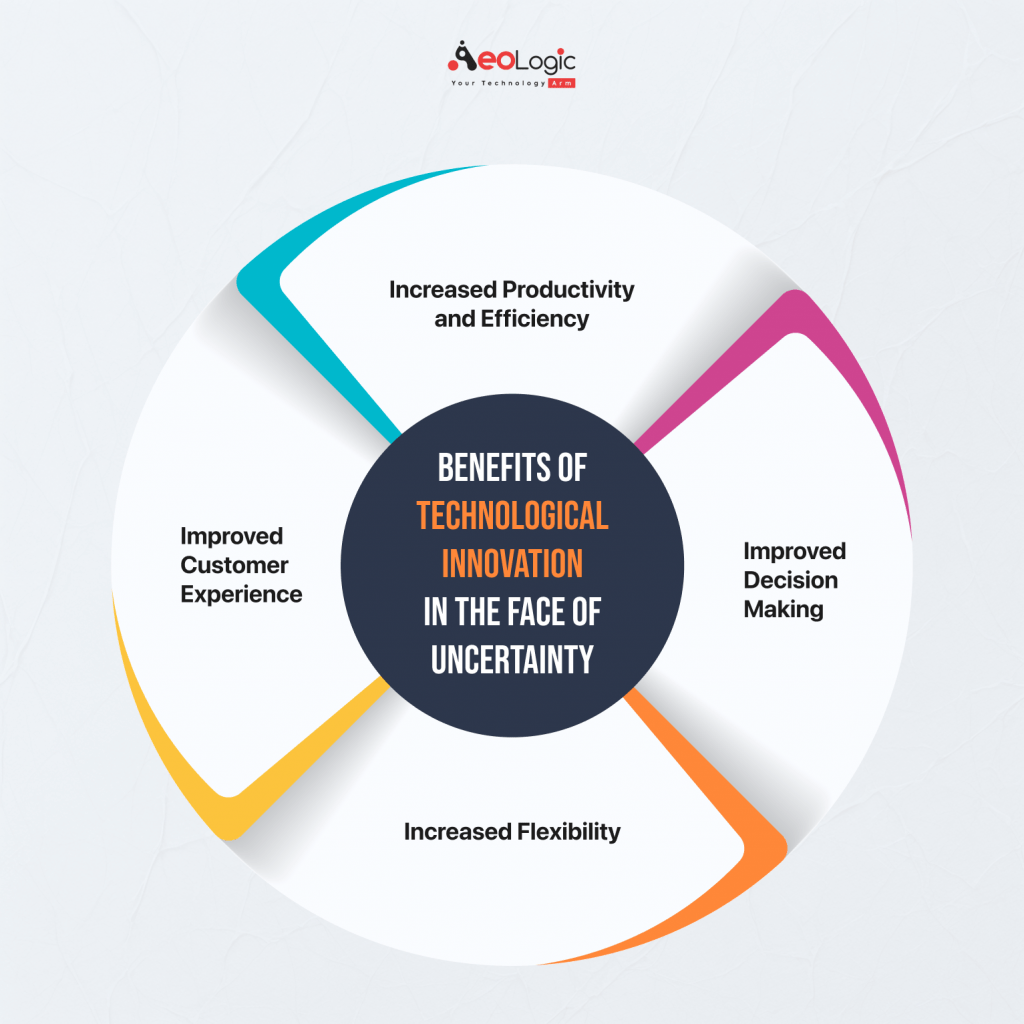Technological innovation in the face of uncertainty is a process by which organizations can create new or improved products, services, or processes to address the uncertainty in their environment. In this article, we will discuss types of technological innovation in the face of uncertainty.
Introduction
Technological innovation is a process by which new technologies are created and integrated into society. This process can be divided into three main stages: invention, diffusion, and adoption. Invention is the creation of new technology, diffusion is the spread of that technology to new users, and adoption is the use of that technology by a significant number of people.
Types of Technological Innovation in the Face of Uncertainty
Technological innovation is a process that involves the creation and implementation of new or improved technology in order to achieve specific objectives. This process can be motivated by a variety of factors, including the need to address a particular problem or opportunity, the desire to improve the performance of existing technology, or the desire to create something completely new and different.
There are two primary types of technological innovation: incremental and radical.
Incremental innovation involves making small improvements to existing technology, while radical innovation involves developing entirely new technology. Both types of innovation can be useful in the face of uncertainty, but they each have their own advantages and disadvantages.
Incremental innovation is typically less risky than radical innovation because it builds on existing technology and knowledge. This means that there is less uncertainty about whether the new technology will work as intended. Additionally, incremental innovation can be less expensive than radical innovation, because it generally requires less research and development.
Radical innovation, on the other hand, can be riskier than incremental innovation, because it involves developing entirely new technology. This means that there is more uncertainty about whether the new technology will work as intended. Additionally, radical innovation can be more expensive than incremental innovation, because it often requires more research and development.
In the end, the best type of technological innovation to pursue in the face of uncertainty depends on the specific situation.
Also Read: Role of Metaverse Technology for Business Success
Benefits of Technological Innovation in the Face of Uncertainty

Technological innovation has always been a key driver of economic growth and productivity. In recent years, however, the pace of technological change has accelerated, making it more difficult for businesses to keep up with the latest innovations. This is particularly true in the face of economic uncertainty when businesses are under pressure to cut costs and become more efficient.
Fortunately, there are a number of benefits that businesses can enjoy by investing in technological innovation, even in the face of uncertainty.
Increased Productivity and Efficiency
One of the most important benefits of investing in technological innovation is increased productivity and efficiency. By adopting new technologies, businesses can automate tasks, streamline processes and improve communication and collaboration. This can lead to significant cost savings and help businesses to remain competitive.
Improved Decision Making
Another benefit of investing in technological innovation is improved decision making. With access to data and analytics tools, businesses can gain a deeper understanding of their customers, their markets and their own operations. This information can be used to make more informed decisions about product development, marketing and other strategic decisions.
Increased Flexibility
Another benefit of technological innovation is increased flexibility. By investing in new technologies, businesses can quickly adapt to changes in the market or their own operations. This can be particularly important in times of economic uncertainty, when businesses need to be able to respond quickly to changes in the market.
Improved Customer Experience
Finally, another benefit of technological innovation is improved customer experience. By investing in new technologies, businesses can provide their customers with a more personalized and convenient experience. This can lead to improved customer satisfaction and loyalty, which can translate into increased sales and profits.
Also Read: The Role of Technology in Sustainable Development
Challenges of Technological Innovation in the Face of Uncertainty
Technological innovation is a critical driver of economic growth. However, it can also be a source of significant uncertainty for businesses. This is because new technologies can create new opportunities and threats that are difficult to predict.
There are four main types of technological innovation that businesses need to be aware of:
- Disruptive innovations
- Incremental innovations
- Radical innovations
- Paradigm-shifting innovations
Disruptive innovations are those that create new markets or significantly change existing ones. They can be either low-end or high-end. Low-end disruptive innovations target existing markets with new products or services that are lower in price or performance. High-end disruptive innovations target new markets with products or services that are significantly better in price or performance.
Incremental innovations are those that improve existing products or services. They typically make them more efficient or effective.
Radical innovations are those that create entirely new products or services. They are usually significantly different from anything that exists on the market.
Paradigm-shifting innovations are those that change the way we think about or use existing products or services. They can be either disruptive or incremental.
The best way for businesses to deal with the uncertainty of technological innovation is to embrace it. They need to be willing to experiment with new technologies and take risks.
Future of Technological Innovation in the Face of Uncertainty
Technological innovation is a process that leads to the development and adoption of new or improved technologies. This process can be divided into four distinct stages:
1) Invention: This is the stage where a new technology is created.
2) Diffusion: This is the stage where the new technology is disseminated and adopted by others.
3) Utilization: This is the stage where the technology is put to use.
4) Evaluation: This is the stage where the technology is assessed to determine its effectiveness.
The future of technological innovation is uncertain. This is because it is difficult to predict what new technologies will be developed and how they will be adopted.
Also Read: Role of Technology in Smart Governance
Conclusion
Technological innovation has been a powerful tool in the face of uncertainty. From the development of new medical technologies to assist in the fight against pandemics, to the creation of new software and platforms to facilitate remote work and learning, technology has played a critical role in helping society adapt to the changes brought about by uncertainty. Additionally, innovations in fields such as artificial intelligence and machine learning have the potential to help us better predict and manage future uncertainties.
If you are planning to integrate technology into your business, our experts can help you materialize your vision. Please get in touch with us.
Related Blogs:
- How AI/ML Can Change the Public Transportation Industry
- Transforming Business With Digital Technology in the Oil Palm Industry in India
- Importance of Digital Asset Management in the Retail Industry
- How AI is Transforming the Agriculture Industry
- 10 Ways to Use Artificial Intelligence to Improve Business Processes
- The Future of IoT Technology in Convenience Stores
- Building Manufacturing Resilience Through AI and ML









